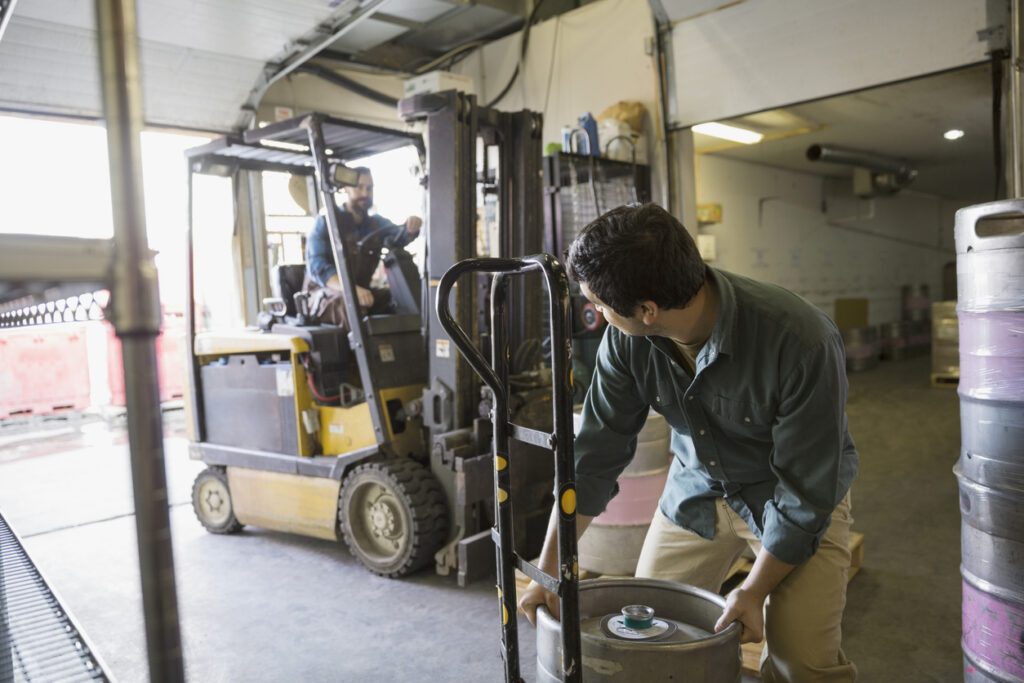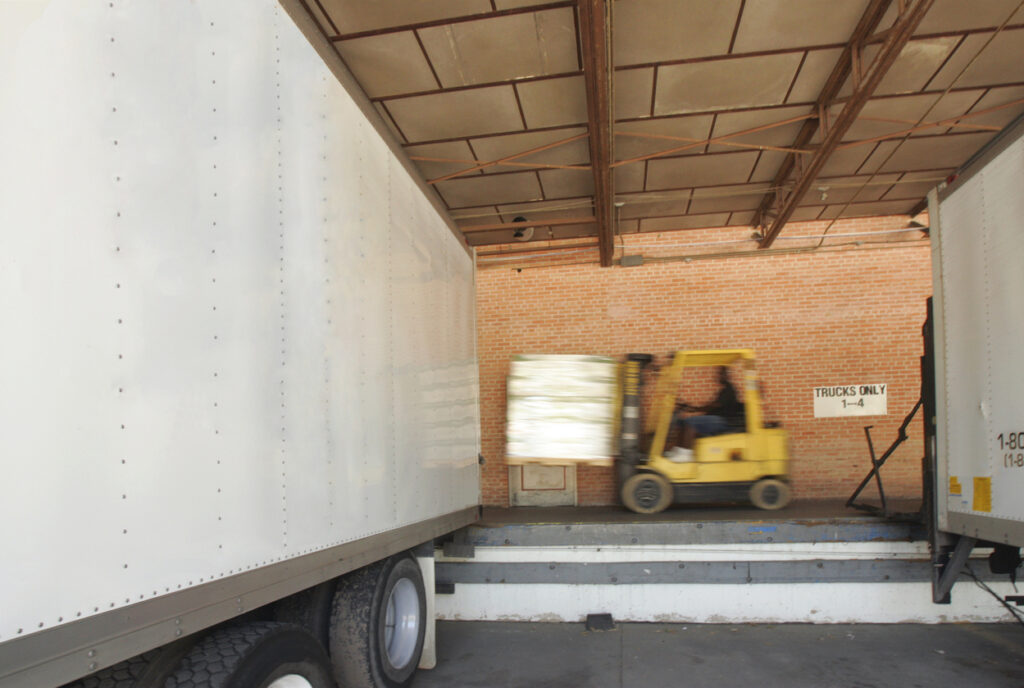Training and procedures in spotlight during Forklift Safety Day
June 13 marks the tenth annual National Forklift Safety Day, implemented to reinforce operator safety training and forklift safety procedures. And there are still some lessons to learn when it comes to the equipment that transfers freight from docks to trailers.
In the past five years, between 2018 and 2023, WorkSafe BC reported an estimated 489 to 546 forklift-related claims per year – including everything from falls off lift trucks, to collisions and rollovers.
Six fatalities were reported.

The most common cause of such deaths involves an operator who is ejected from a lift truck and crushed, says Morris Benetton, WorkSafe BC’s prevention field services manager.
Loading docks are among the most dangerous areas for forklift operators because they represent congested areas with a lot of fast-paced activity and often poor visibility, adds Dan Dukoff, CEO and president of Ontario-based Safe-Tech Training.
For that reason, during operator training, the school places a lot of attention on proper dock plate inspections, rules around entering and exiting trailers, and the need to inspect trucks and trailers before entering.
Even minor damage matters
When a trailer is empty, the process begins with a visual walk-in inspection, Dukoff says, referring to the need to watch for slices, rips, and other damage to the walls.
“Even minor damage to the wall section of the trailer, the outer skin, is the weak point,” he explains. “Because in most trailers, the actual bond between the wall and the floor is [responsible for] the integrity. And if there’s damage to the wall, the floor can fall out of a trailer.”
Heavy forklifts and overloaded trailers can both contribute to such damage.
Meanwhile, restraints that secure a trailer against a loading dock can prevent trailer creep, premature departures, or upended trailers as forklifts roll onboard. And using a jack stand to support the nose of an uncoupled trailer will keep things from tipping.
“If the weight of a lift truck travels to the front of that trailer, or the front of the trailer is overloaded, it can actually flip the trailer up on its end,” Dukoff says.
Combatting trailer creep
Trailer creep occurs when the speed and weight of a moving forklift rolls trailer wheels slightly forward, creating a dangerous gap between the trailer and the dock. This can be prevented by blocking the wheels with chocks or restraining the unit with a dock lock mechanism.
A general sense of awareness will make a difference of its own. Forklift operators can also be injured if a truck pulls away from a dock earlier than expected. “Now the forklift can fall off the building or out of the truck,” Dukoff says of the danger. “That happens with miscommunication.”
One tool to prevent this is a gladhand lock, which prevents truck drivers from reconnecting the brake lines until everything is unlocked by the shipper or receiver.

Assessing risks
Other steps to prevent forklift-related injuries begin before equipment even arrives at a yard, says WorkSafe BC’s Benetton.
It involves considering the main tasks to be performed, choosing the best equipment for the job, and addressing risks – using things like floor markings, concrete barriers, and safety procedures to separate pedestrians from moving equipment, he explains.
It all comes down to considering five key factors: The proximity of workers to moving equipment; forklift condition and maintenance; tasks; the working environment such as blind spots and surfaces forklifts will travel on; and people.
In the latter case, responsibilities are not on the worker alone.
“The workers, the team that’s working, the supervisors — are they trained? Are they aware of the hazards and the risk controls? Are they aware of the requirements that employers, hopefully, put in place, that they also have to help maintain and implement?” Benetton asks.
“We often hear, ‘Oh, it’s the worker’s fault. They should have been more aware.’… That distraction can be part of a contributing factor, but it is not typically the primary factor. You want to have all these other controls in place, so you don’t have to rely on just awareness.”
Removing or replacing a hazard, engineering controls to separate people from hazards, administrative controls, and PPE come before that.
Training and competency
Training in CSA’s B335-15 safety standard for lift trucks is required in both B.C. and Ontario, but it’s up to employers to ensure that operators are trained and competent, or if they need a refresher course.
WorkSafe BC considers several factors when inspecting a location.
“We watch how the lift trucks are operated,” Benetton says, referring to several questions that are asked. Can the driver demonstrate a pre-shift inspection? Can they describe the role of the invisible stability triangle that connects the front wheels and the rear axle’s pivot point, and how keeping the load’s center of gravity within the triangle will keep a forklift from tipping over? What can they say about the operation’s hazards, or things that can affect the lift truck’s stability? What would they do if there was an issue with the lift truck itself?
“As we all know, [any operator] can go and get lift truck training one day and demonstrate through practical and theoretical testing that [they] passed the course — and the very next day proceed to abandon everything [they’ve] learned and just spin around the place without a seatbelt, and without honking, at high speeds.”
Have your say
This is a moderated forum. Comments will no longer be published unless they are accompanied by a first and last name and a verifiable email address. (Today's Trucking will not publish or share the email address.) Profane language and content deemed to be libelous, racist, or threatening in nature will not be published under any circumstances.
The most dangerous pieces of equipment in use today. Couple that with extreme lack of supervision and discipline = death and serious injuries. One of the reasons I’m happy to not work in warehouses any more.